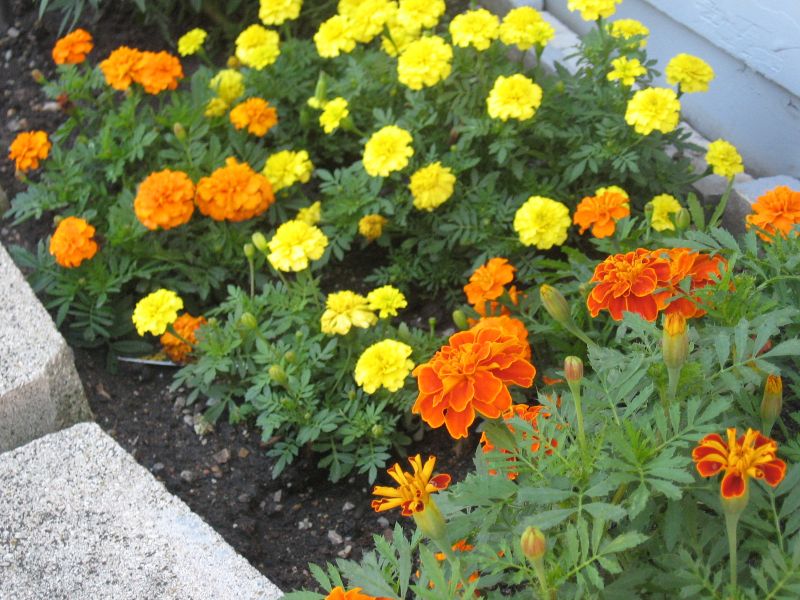There are some people I just love to work with. No matter what we're doing, I always do better work when I'm with them. I'm sure you know how that works. And then there are some people who make all my ideas shrivel up and die. I really hope you don't know how that works.
Plants are the same way. Over the years, gardeners have found quite a few combinations of plants that work well and poorly together. Maybe one plant attracts beneficial insects that help the other; maybe one plant gives off some kind of chemical that helps the other to grow. We don't always know how it works, but we know that it works, and we've given this relationship a name: companion planting. Gardeners have found flowers, herbs, vegetables, even fruit trees that benefit some other kind of plant. In this column, let's talk about flowers. Marigolds are the 900-pound gorilla of the companion planting world. They seem to benefit practically everything well, at least, an awful lot of plants, enough that the following saying sprang up: Plant marigolds everywhere in your garden. This unassuming little plant is really the workhorse of the companion plant system. They are known chiefly for helping vegetables, including tomatoes, peppers, cucumbers, squash, gourds, broccoli, kale, and cabbage. As far as I know, a vegetable garden must include tomatoes; if it doesn't, I think the gardener is thrown out of the club or something. If you grow tomatoes, you should put marigolds nearby. They're pretty and easy to grow, and they'll make your tomatoes better than ever. Another really cool thing about marigolds is that they actually discourage some weeds, including celandine, ground elder, ground ivy, couch grass, field bindweed, and horsetail. Imagine you can plant some marigolds and then you won't have to spend as much time, money, or energy fighting weeds! That's green in terms of the planet and saves you some folding green, too! Another useful companion flower is the geranium. Plant these next to your roses, tomatoes, peppers, and grapes. Geraniums are also known to distract beet leafhoppers, which carry the curly top virus, and they repel Japanese beetles.